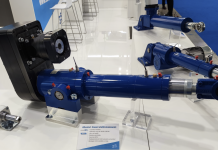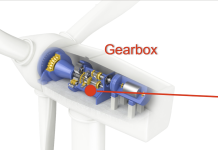With the MDESIGN module bevel and hypoid gear, time-consuming calculations of bevel and hypoid gears via Excel sheets or calculator are a thing of the past. Within a very short time the module enables the efficient design, calculation and optimization of straight, helical and spiral toothed bevel gears, as well as Zerol and hypoid bevel gears as a special form of spiral toothings. This not only saves you valuable time, but you also benefit from shortened development cycles.
Load-bearing capacity now also possible according to AGMA and DNV principles
To calculate the geometry and load-bearing capacity of conical and hypoid gears, different calculation methods are available according to recognized national and international standards and guidelines. In connection with product liability issues, adherence to and application of these standards provides you with the decisive proof that your products are designed according to the latest state of the art.
The geometry of bevel and hypoid gears is calculated on the basis of ISO 23509 or according to AGMA 2005-D03. In practice, there are four common methods for determining the respective partial cone parameters, which are taken into account in MDESIGN: a general method for calculating bevel gears without hypoid offset and three proprietary methods for calculating hypoid gears:
- Gleason
- Oerlikon and
- the Klingelnberg procedure.
The remaining geometry inputs to complete the gearing measurement can be specified according to the European system with profile factor (“EN”) or the American “AGMA” system.
The calculation of the load-bearing capacity (pitting, tooth root and scuffing load capacity) is based on DIN 3991 or ISO 10300. New: Since May 2017, MDESIGN has included two additional international calculation methods, AGMA 2003-C10 and DNVGL-CG-0036. The DNVGL regulation for shipbuilding represents a further development of ISO 6336 and ISO 10300 and also enables you to calculate the subsurface fatigue and strength with measured S-N curves (Wöhler diagram).
Required input variables are, among other values, nominal dimensions such as velocity, torque or bearing factor, as well as material and lubricant specifications. Here you have direct access to an extensive MDESIGN material database, which supports you optimally in the selection of suitable materials. This saves valuable research time. In addition, the tool offers you the possibility to quickly and easily integrate company-specific material characteristics. The calculated safety factors describe the ratio of strength to stress and allow you to make reliable statements about the load-bearing capacity of a gearing at a certain load.
Automatically generate comprehensive calculation documentation
The results of the calculation as well as the used methods, formulas, relevant standards and explanatory graphics, 3D models or tables on which they are based, can then be compiled in a comprehensive documentation at the touch of a button. Not only content and layout can be adapted to your ideas, but with just one click the documentation can be translated from German into English and vice versa. Time-consuming and costly work for translations is a thing of the past.
For further information about our MDESIGN solutions, please contact: Ph. +49 234 30703-60 , e-mail: info@mdesign.de.




I have checked your page and i have found some duplicate content, that’s why
you don’t rank high in google, but there is a tool that can help you
to create 100% unique content, search for: Boorfe’s
tips unlimited content
Please i need help for the Setting of Gleason 106 108 Machine
Sweivel Angle
Cradle Angle
Tilt Angle
Eccentric Angle
Dear Mr. Hanumantha Raju,
for any request about MDESIGN solutions, please contact: Ph. +49 234 30703-60 , e-mail: info@mdesign.de.
Best regards
Anna Bonanomi
editor
hi i am interest to software
Dear Sir, for any request about MDesign, you can directly contact the company on the website.
Best regards
Anna Bonanomi
editor
I am interested in the MDESIGN software. Please tell me how can i get the same.
Dear Ram Naresh,
you can directly contact Mdsign on its website http://www.mdesign.de
Kind regards
Anna Bonanomi
editor